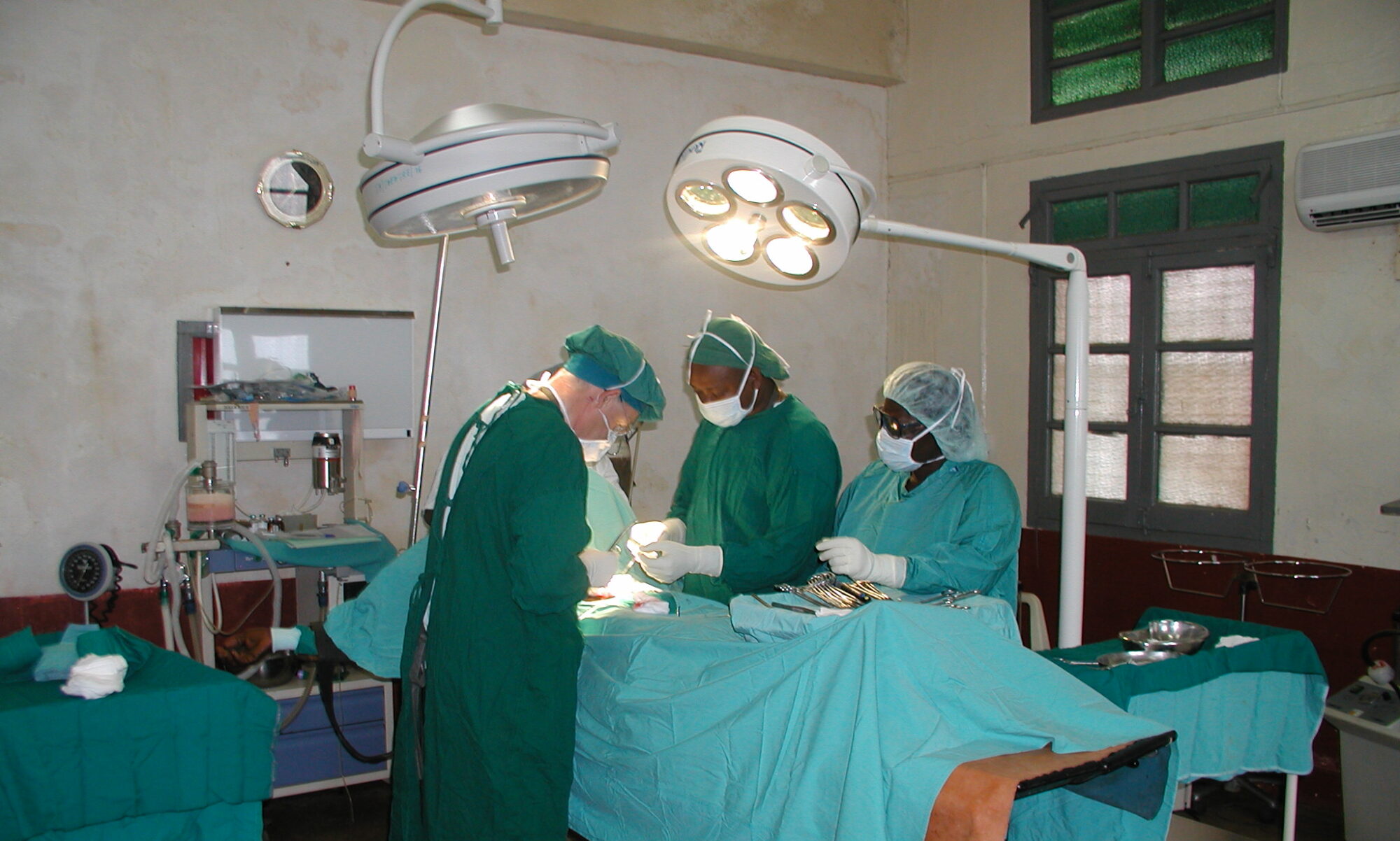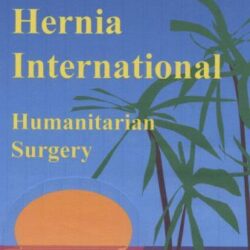We are just back from our last mission of Hernia International Foundation and Surgeon in Action Foundation in Mongolia. The team was made up by Martin Kriz (surgeon) and Christian Andersson (urologist) from Sweden, Hugh McGregor (surgeon) from Australia, J. A. Pascual and T. Butrón (surgeons) and Faustino Santisteban (business) from Spain. This was the fifth mission in Mongolia.
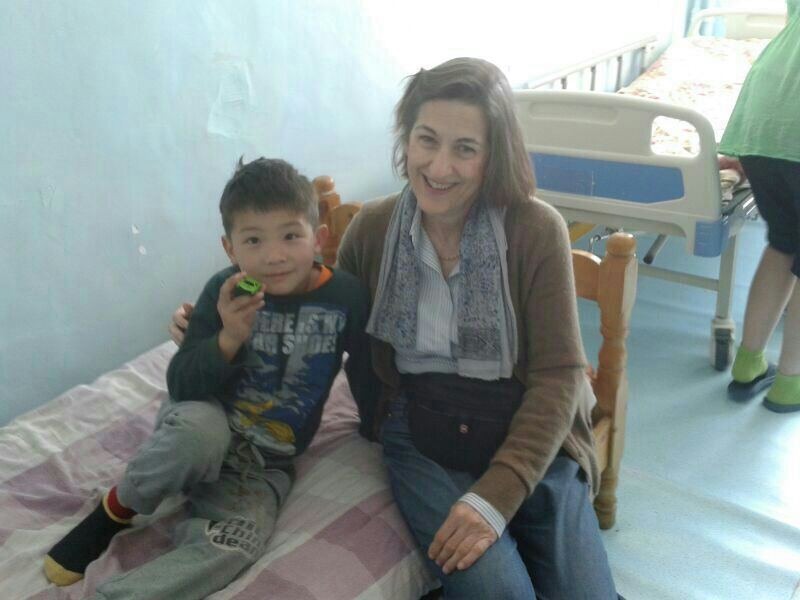
We all arrived on different flights on 14 and 15 June. Martin and Christian remained in Ulaan Bataar during the two weeks the mission lasted, as they went to the prison hospital. The rest of the group flew to the city of Khovd in the Northwest of Mongolia on Monday 16. We were met by the driver of the hospital where we were going to operate on the following days. We loaded all our equipment on a Russian van (the hospital ambulance) and we went to the city of Bayan Olgii 200 km north. The road went through the steppe and over some rivers, and we arrived after more than five hours and some incident as when the van stopped in the middle of a river we were crossing. We waited expectantly, and the driver could finally get us through.
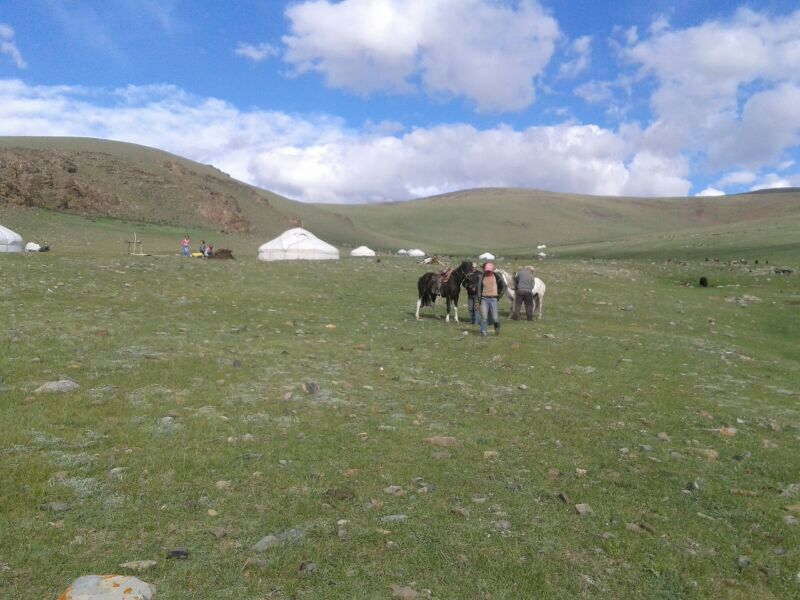
We had a picnic in the steppe with all that we had bought in the supermarket. Along the way we saw herds of sheep, goats yaks, camels, horses, cows and some yurta (Mongol tent). All that in the midst of a treeless landscape, pure steppe with mountains on the horizon. On arrival, we went to the hospital where we were introduced to the staff and then we saw the ten patients we would be operating the next day as well as the operating theatres. We ended our day with supper with the hospital director, two residents (Bota and Satu) and Sanchin in a Turkish restaurant.
Next day we started operating. We were able to get more instruments and so we could place two operating tables in one of the theatres. Thus we operated 12 patients. We had lunch and dinner at the hospital. Every day we did the rounds in the wards, and then we operated on three different tables. At the end of the day we saw the patients to be operated the next day. We were daily helped by the surgeons and residents of the hospital, and on Friday evening we gave two lectures.
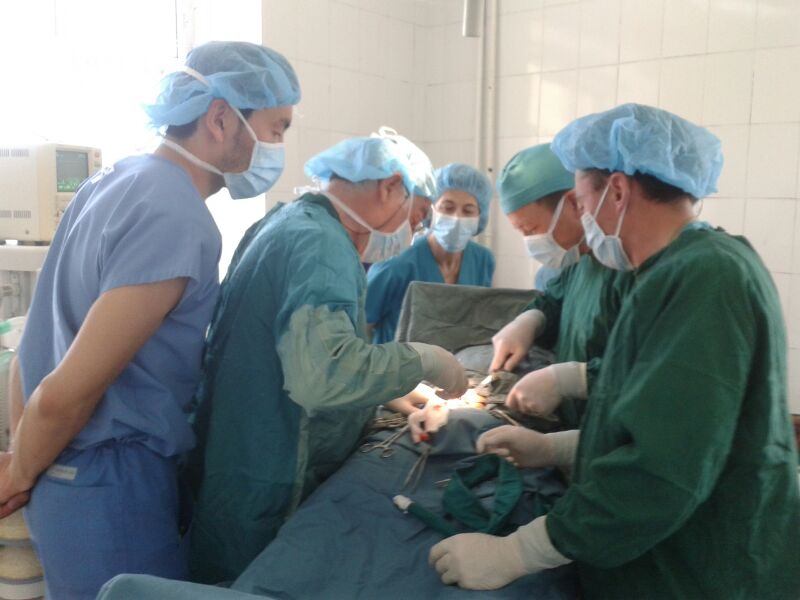
On Saturday we went for an outing with some of the surgeons and anaesthiologists of the hospital. We went to a valley surrounded by mountains where the Mongols spend their summer. In the midst of that impressive landscape we were invited for dinner inside a Mongol tent. On Sunday morning Hugh operated on the last child. We then went round the city and had lunch with some surgeons and doctors of the hospital. Then we took our leave.
We came back again to Ulaan Bataar where we spent our second week. We arrived on Monday evening and we went to the hospital where we saw the patients we would be operating next day. The following days we followed the same pattern as in Bayan Olgii. At the end of the week we had operated more than one hundred patients.
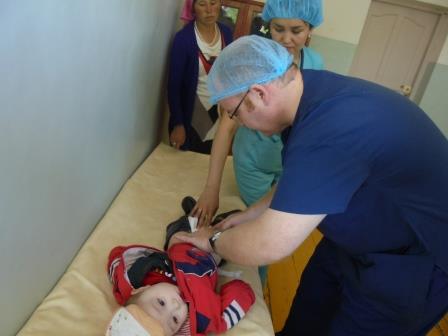
In the evenings we walked around the city, we went to see a show of Mongolian folklore, and we had dinner in a Mongol restaurant. We hardly realized when the last day arrived. We had had a TV interview. Our mission was over, and we had come up to all our own expectations: 20 patients operated in the prison hospital, 52 patients in Bayan Olgii, and 29 in the second hospital of Ulaan Bataar. (101 patients, 29 of them children.)
Teresa Butron
